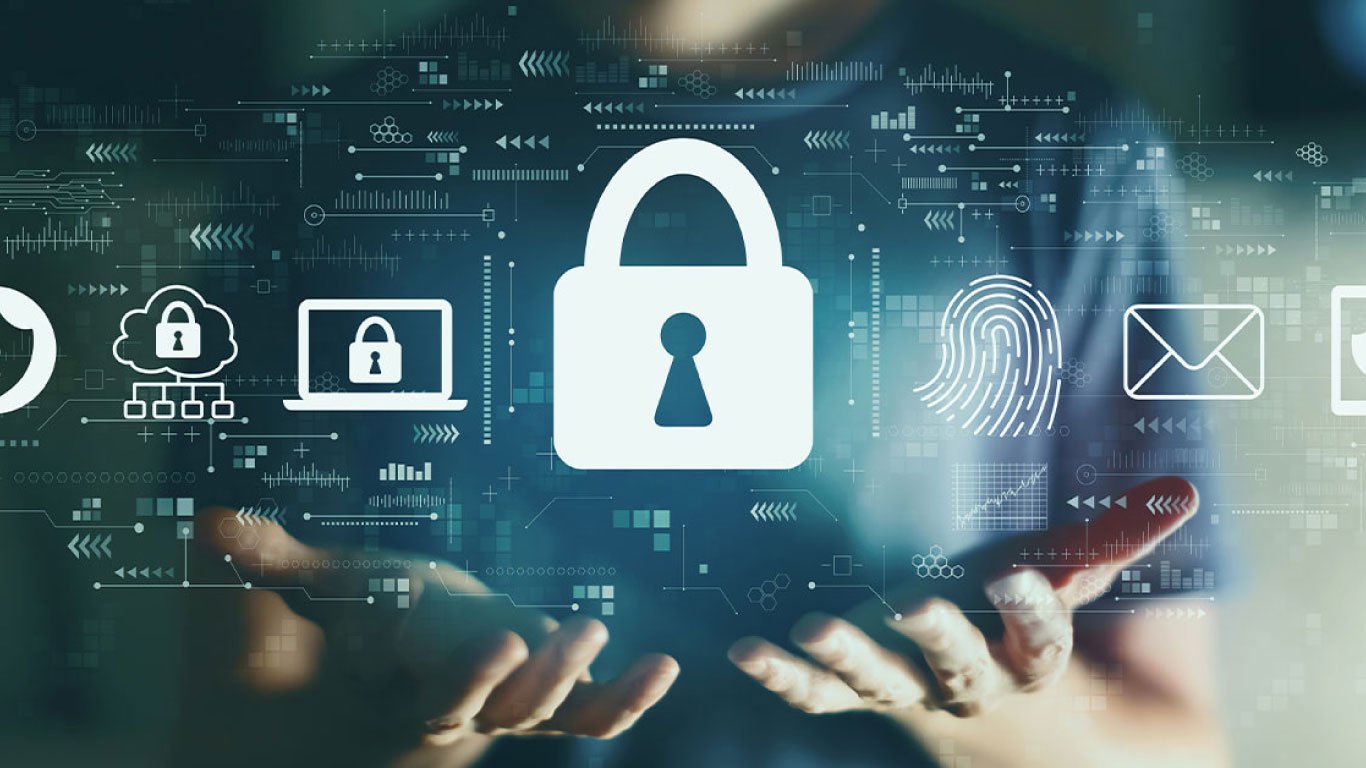Cybersecurity in the Digital Age: Protecting Your Data

Introduction to Cybersecurity
In today’s digital age, cybersecurity has become an essential aspect of our lives. With the increasing reliance on technology and the interconnectedness of systems, protecting our data and online privacy is of paramount importance. Cybersecurity refers to the practice of safeguarding electronic systems, networks, and data from unauthorized access, theft, damage, or disruption. This article aims to explore the significance of cybersecurity and provide practical tips for protecting your data in the digital realm.
Importance of Cybersecurity in the Digital Age
In an era where sensitive information is stored and transmitted electronically, cybersecurity plays a crucial role in maintaining the integrity, confidentiality, and availability of data. Cybercriminals are constantly evolving their tactics, making it imperative for individuals and organizations to stay vigilant and take proactive measures to safeguard their digital assets. The consequences of a cyber attack can be severe, ranging from financial losses and reputational damage to legal implications and compromised personal information.
Common Cybersecurity Threats
To effectively protect our data, it is essential to understand the common cybersecurity threats that exist. Malware, such as viruses, worms, and ransomware, poses a significant risk to our digital systems. Phishing attacks, where cybercriminals trick individuals into divulging sensitive information, are also prevalent. Other threats include social engineering attacks, DDoS (Distributed Denial of Service) attacks, and insider threats.
Types of Cyber Attacks
Cyber attacks can take various forms, each with its own techniques and objectives. Some notable types of cyber attacks include:
- Malware Attacks: These involve the use of malicious software to gain unauthorized access, disrupt systems, or steal data.
- Phishing Attacks: Cybercriminals use deceptive tactics, often through emails or fake websites, to trick individuals into revealing sensitive information.
- Ransomware Attacks: Malicious software is used to encrypt data, holding it hostage until a ransom is paid.
- Distributed Denial of Service (DDoS) Attacks: These attacks overwhelm a network or website with a flood of traffic, rendering it inaccessible to legitimate users.
- Insider Threats: Attacks or data breaches caused by individuals with authorized access to systems or information.
Strategies for Protecting Your Data
Implementing robust cybersecurity measures can significantly reduce the risk of a cyber attack and protect your valuable data. Here are some effective strategies:
- Encryption: Utilize encryption technologies to secure sensitive data both in transit and at rest.
- Strong Passwords: Create unique, complex passwords for all your online accounts and consider using a reliable password manager.
- Two-Factor Authentication: Enable two-factor authentication whenever possible to add an extra layer of security to your accounts.
- Software and System Updates: Keep your operating systems, applications, and devices up to date with the latest security patches and updates.
- Antivirus Software: Install reputable antivirus software to detect and remove malware from your systems.
- Employee Education: Educate employees about cybersecurity best practices, such as recognizing phishing attempts and practicing safe browsing habits.
- Data Backup and Recovery: Regularly backup your data to an offsite location and ensure you have a robust plan for data recovery in case of a breach or system failure.

The Role of Encryption in Cybersecurity
Encryption is a fundamental aspect of cybersecurity. It involves encoding data in such a way that only authorized parties can access and decipher it. Encryption helps protect sensitive information during storage, transmission, and processing. By employing encryption techniques, even if data is intercepted by an unauthorized entity, it remains unreadable and unusable.
Importance of Strong Passwords
Passwords act as the first line of defense against unauthorized access. Creating strong and unique passwords for each online account is essential. A strong password typically consists of a combination of upper and lowercase letters, numbers, and special characters. Avoid using easily guessable information such as birthdays or common phrases. Remember to change passwords periodically and refrain from using the same password across multiple accounts.
Two-Factor Authentication
Two-factor authentication (2FA) adds an extra layer of security to your online accounts. It typically involves providing an additional piece of information, such as a temporary code sent to your mobile device, along with your password. This ensures that even if someone gains access to your password, they still need the second factor to log in, making it significantly harder for unauthorized individuals to breach your accounts.
Keeping Software and Systems Up to Date
Software and system updates often include security patches that address known vulnerabilities. Regularly updating your operating systems, applications, and devices ensures that you have the latest security enhancements, reducing the risk of exploitation by cybercriminals. Enable automatic updates whenever possible to ensure you stay protected.
The Role of Antivirus Software
Antivirus software is a critical tool in your cybersecurity arsenal. It helps detect and remove malware from your systems, protecting you from various threats such as viruses, worms, Trojans, and spyware. Keep your antivirus software up to date and perform regular scans to identify and eliminate any potential threats.
Educating Employees and Raising Awareness
Employees are often the weakest link in an organization’s cybersecurity defense. Investing in employee education and raising awareness about cybersecurity best practices is crucial. Conduct training sessions, share educational resources, and promote a culture of cybersecurity consciousness within your organization. Encourage employees to report any suspicious activities or potential security breaches promptly.
Data Backup and Recovery
Data backup is an essential aspect of cybersecurity. Regularly backup your critical data to an offsite location or cloud storage service. In the event of a cyber attack or system failure, having backups ensures that you can recover your data and resume operations with minimal disruption. Test the restoration process periodically to ensure the integrity and reliability of your backups.
The Impact of Social Engineering Attacks
Social engineering attacks rely on human interaction and manipulation to gain unauthorized access or sensitive information. Cybercriminals often exploit psychological tendencies or trust to deceive individuals. Common social engineering techniques include pretexting, baiting, phishing, and tailgating. Being aware of these tactics and practicing skepticism can help you avoid falling victim to social engineering attacks.
Protecting Your Data on Public Wi-Fi Networks
Using public Wi-Fi networks poses risks to your data security. These networks are often unsecured, making it easier for cybercriminals to intercept your data. When using public Wi-Fi, consider the following precautions:
- Avoid accessing sensitive information or conducting financial transactions.
- Use a virtual private network (VPN) to encrypt your internet traffic and enhance security.
- Disable file sharing and network discovery on your device to minimize the risk of unauthorized access.
Emerging Trends in Cybersecurity
Cybersecurity is an ever-evolving field, with new threats and technologies constantly emerging. Some of the emerging trends in cybersecurity include:
- Artificial Intelligence (AI) in Security: AI-powered tools can help detect and respond to cyber threats more efficiently.
- Internet of Things (IoT) Security: As IoT devices become more prevalent, ensuring their security becomes crucial to protect against potential vulnerabilities.
- Biometric Authentication: Biometric measures, such as fingerprint or facial recognition, are being increasingly used for secure authentication.
- Blockchain for Security: Blockchain technology offers potential applications in enhancing security, such as secure identity management and tamper-resistant data storage.
Conclusion
In today’s digital landscape, cybersecurity is a paramount concern for individuals and organizations alike. By understanding common threats, implementing robust security measures, and staying informed about emerging trends, you can protect your data and preserve your online privacy. Remember to stay vigilant, update your systems, educate yourself and others, and follow best practices for online security. Safeguarding your data is an ongoing process that requires proactive measures and continuous attention to mitigate risks and ensure a secure digital environment.
FAQs (Frequently Asked Questions)
- What is the importance of cybersecurity? Cybersecurity is essential as it protects our digital systems, networks, and data from unauthorized access, theft, and disruption. It helps maintain privacy, integrity, and availability of information.
- What are some common cyber threats? Common cyber threats include malware, phishing attacks, ransomware, social engineering, DDoS attacks, and insider threats.
- How can I protect my data from cyber attacks? You can protect your data by using encryption, strong passwords, two-factor authentication, keeping software updated, using antivirus software, educating employees, and regularly backing up your data.
- What is the role of encryption in cybersecurity? Encryption helps secure sensitive data by encoding it in such a way that only authorized parties can access and decipher it. It ensures the confidentiality and integrity of information.
- What are some emerging trends in cybersecurity? Emerging trends in cybersecurity include the use of artificial intelligence, IoT security, biometric authentication, and the application of blockchain technology for enhanced security measures.
